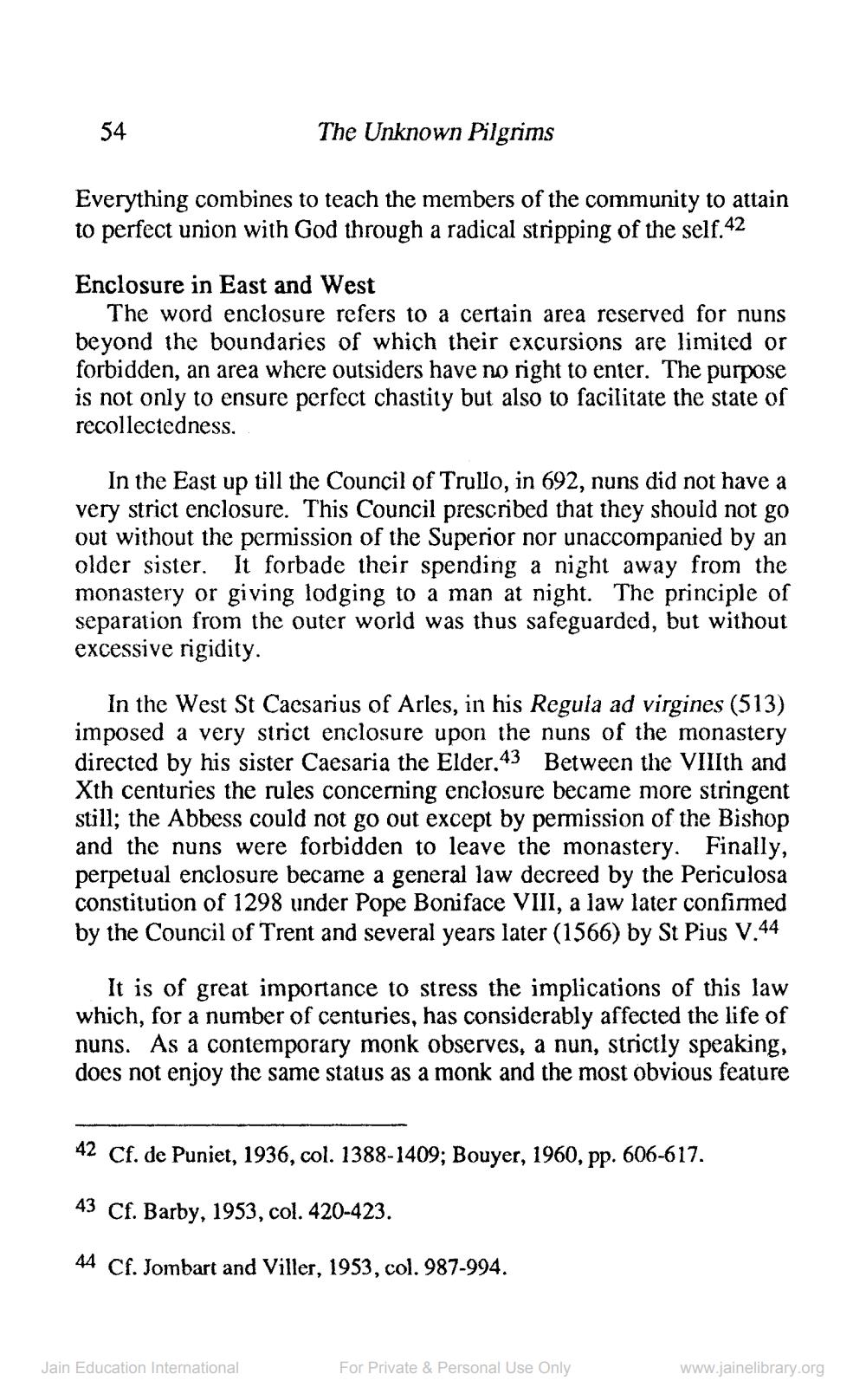________________
The Unknown Pilgrims
Everything combines to teach the members of the community to attain to perfect union with God through a radical stripping of the self.42
54
Enclosure in East and West
The word enclosure refers to a certain area reserved for nuns beyond the boundaries of which their excursions are limited or forbidden, an area where outsiders have no right to enter. The purpose is not only to ensure perfect chastity but also to facilitate the state of recollectedness.
In the East up till the Council of Trullo, in 692, nuns did not have a very strict enclosure. This Council prescribed that they should not go out without the permission of the Superior nor unaccompanied by an older sister. It forbade their spending a night away from the monastery or giving lodging to a man at night. The principle of separation from the outer world was thus safeguarded, but without excessive rigidity.
In the West St Caesarius of Arles, in his Reguia ad virgines (513) imposed a very strict enclosure upon the nuns of the monastery directed by his sister Caesaria the Elder.43 Between the VIIIth and Xth centuries the rules concerning enclosure became more stringent still; the Abbess could not go out except by permission of the Bishop and the nuns were forbidden to leave the monastery. Finally, perpetual enclosure became a general law decreed by the Periculosa constitution of 1298 under Pope Boniface VIII, a law later confirmed by the Council of Trent and several years later (1566) by St Pius V.44
It is of great importance to stress the implications of this law which, for a number of centuries, has considerably affected the life of nuns. As a contemporary monk observes, a nun, strictly speaking, does not enjoy the same status as a monk and the most obvious feature
42 Cf. de Puniet, 1936, col. 1388-1409; Bouyer, 1960, pp. 606-617.
43 Cf. Barby, 1953, col. 420-423.
44 Cf. Jombart and Viller, 1953, col. 987-994.
Jain Education International
For Private & Personal Use Only
www.jainelibrary.org




